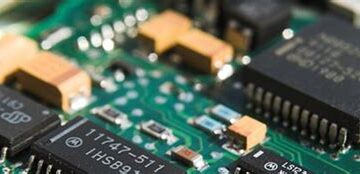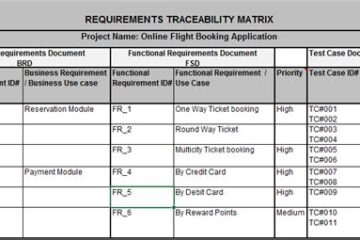Introduction
Siemens, a global technology powerhouse, has recently unveiled PCBflow, a groundbreaking solution designed to streamline the Design for Manufacturing (DFM) handoff process for printed circuit boards (PCBs). This innovative tool promises to revolutionize the PCB industry by enhancing collaboration between design and manufacturing teams, ultimately reducing time-to-market and improving overall product quality.
What is PCBflow?
PCBflow is a comprehensive software solution that bridges the gap between PCB design and manufacturing. It enables seamless data exchange, real-time feedback, and automated design rule checks (DRCs) to ensure that PCB designs are optimized for manufacturability from the outset.
Key features of PCBflow include:
- Collaborative platform for design and manufacturing teams
- Real-time DFM analysis and feedback
- Automated design rule checks (DRCs)
- Intelligent data exchange and version control
- Integration with leading PCB design tools
By leveraging PCBflow, companies can significantly reduce the time and effort required to prepare PCB designs for manufacturing, minimizing costly redesigns and production delays.
The Importance of DFM in PCB Design
Design for Manufacturing (DFM) is a critical aspect of PCB design that focuses on ensuring that a product can be manufactured efficiently, reliably, and cost-effectively. By considering manufacturing constraints and guidelines early in the design process, companies can avoid potential issues that may arise during production, such as:
- Incompatible materials or components
- Insufficient clearances or tolerances
- Inefficient routing or layout
- Inadequate testing points or access
Traditionally, the DFM handoff process has been a time-consuming and error-prone task, requiring manual data exchange and communication between design and manufacturing teams. This often leads to delays, miscommunications, and unnecessary iterations, ultimately impacting project timelines and costs.
PCBflow aims to address these challenges by providing a unified platform that facilitates seamless collaboration and data exchange between design and manufacturing teams.

How PCBflow Accelerates the DFM Handoff Process
PCBflow accelerates the DFM handoff process by automating key tasks and enabling real-time collaboration between design and manufacturing teams. Some of the ways in which PCBflow streamlines the DFM process include:
1. Real-time DFM Analysis and Feedback
PCBflow provides real-time DFM analysis and feedback as designers work on their PCB layouts. The software continuously checks the design against a comprehensive set of manufacturing constraints and guidelines, flagging any potential issues or violations. This allows designers to make necessary adjustments on the fly, reducing the need for extensive revisions later in the process.
2. Automated Design Rule Checks (DRCs)
PCBflow includes a powerful Design Rule Check (DRC) engine that automatically verifies the PCB design against a predefined set of rules and constraints. These rules can be customized based on the specific requirements of the manufacturing facility, ensuring that the design is optimized for production from the outset. Automated DRCs help catch potential issues early in the design process, reducing the risk of costly redesigns or production delays.
3. Intelligent Data Exchange and Version Control
PCBflow enables intelligent data exchange between design and manufacturing teams, ensuring that all stakeholders have access to the most up-to-date information at all times. The software supports a wide range of data formats, including industry-standard file types such as ODB++, IPC-2581, and Gerber.
Additionally, PCBflow includes built-in version control capabilities, allowing teams to track changes, manage revisions, and collaborate effectively throughout the design and manufacturing process.
4. Integration with Leading PCB Design Tools
PCBflow seamlessly integrates with leading PCB design tools, such as Siemens’ own Xpedition and Mentor Graphics’ PADS. This integration enables designers to access PCBflow’s powerful DFM capabilities directly within their preferred design environment, streamlining their workflow and minimizing the need for additional software or data transfers.
Benefits of Implementing PCBflow
Implementing PCBflow offers numerous benefits for companies involved in PCB design and manufacturing:
-
Reduced Time-to-Market: By streamlining the DFM handoff process and enabling real-time collaboration, PCBflow helps companies bring their products to market faster, gaining a competitive edge in today’s fast-paced electronics industry.
-
Improved Product Quality: PCBflow’s automated DRCs and real-time DFM analysis help ensure that PCB designs are optimized for manufacturability from the outset, reducing the risk of defects or quality issues during production.
-
Cost Savings: By catching potential issues early in the design process and minimizing the need for redesigns or production delays, PCBflow helps companies save on development and manufacturing costs.
-
Enhanced Collaboration: PCBflow provides a unified platform for design and manufacturing teams to collaborate effectively, fostering better communication, transparency, and trust throughout the product development lifecycle.
-
Increased Efficiency: With PCBflow’s automated features and intelligent data exchange capabilities, companies can streamline their PCB design and manufacturing processes, increasing overall efficiency and productivity.
Case Studies
Several companies across various industries have already implemented PCBflow and experienced significant benefits:
1. Automotive Electronics Manufacturer
An automotive electronics manufacturer adopted PCBflow to streamline their DFM handoff process for complex, high-reliability PCBs. By leveraging PCBflow’s real-time DFM analysis and automated DRCs, the company reduced their design cycle time by 30% and improved their first-pass yield by 15%.
2. Medical Device Company
A medical device company implemented PCBflow to ensure that their PCB designs met the stringent quality and reliability requirements of the healthcare industry. With PCBflow’s comprehensive DFM capabilities and seamless integration with their existing design tools, the company was able to develop and manufacture innovative medical devices faster and more efficiently than ever before.
3. Aerospace and Defense Contractor
An aerospace and defense contractor adopted PCBflow to streamline collaboration between their global design and manufacturing teams. PCBflow’s intelligent data exchange and version control features enabled the company to manage complex PCB designs across multiple sites, ensuring consistent quality and reducing the risk of errors or delays.
Frequently Asked Questions (FAQ)
-
Q: Is PCBflow compatible with my existing PCB design software?
A: PCBflow seamlessly integrates with leading PCB design tools, such as Siemens’ Xpedition and Mentor Graphics’ PADS. It is designed to work with a wide range of design environments, enabling users to access its powerful DFM capabilities without disrupting their existing workflows. -
Q: How does PCBflow ensure that my PCB designs meet manufacturing requirements?
A: PCBflow includes a comprehensive set of automated Design Rule Checks (DRCs) that verify your PCB design against a predefined set of manufacturing constraints and guidelines. These rules can be customized based on the specific requirements of your manufacturing facility, ensuring that your designs are optimized for production from the outset. -
Q: Can PCBflow help me collaborate with my manufacturing team more effectively?
A: Yes, PCBflow provides a unified platform for design and manufacturing teams to collaborate in real-time. With features like intelligent data exchange, version control, and real-time DFM analysis, PCBflow enables seamless communication and transparency throughout the PCB design and manufacturing process. -
Q: How much time can I save by implementing PCBflow in my PCB design process?
A: The time savings achieved by implementing PCBflow can vary depending on the complexity of your PCB designs and the efficiency of your current DFM handoff process. However, many companies have reported significant reductions in design cycle time, often in the range of 20-50%, by leveraging PCBflow’s automated features and real-time collaboration capabilities. -
Q: Is PCBflow suitable for small-scale PCB design projects, or is it only for large enterprises?
A: PCBflow is designed to be scalable and adaptable to the needs of companies of all sizes. Whether you’re a small startup working on a single PCB design or a large enterprise managing multiple complex projects, PCBflow can help streamline your DFM handoff process and improve collaboration between your design and manufacturing teams.
Conclusion
Siemens’ PCBflow is a game-changing solution that promises to revolutionize the way companies approach PCB design and manufacturing. By streamlining the DFM handoff process, enabling real-time collaboration, and automating key tasks, PCBflow helps companies bring their products to market faster, with improved quality and reduced costs.
As the electronics industry continues to evolve and become more competitive, tools like PCBflow will play an increasingly critical role in helping companies stay ahead of the curve. By embracing innovative solutions that bridge the gap between design and manufacturing, companies can unlock new levels of efficiency, collaboration, and innovation, ultimately driving success in today’s dynamic market landscape.



0 Comments